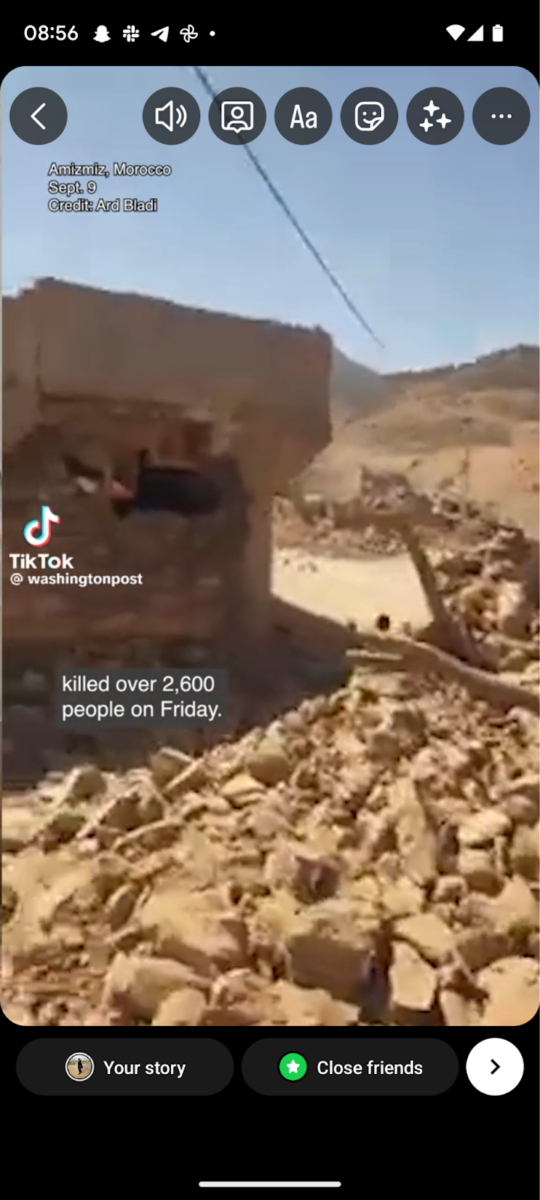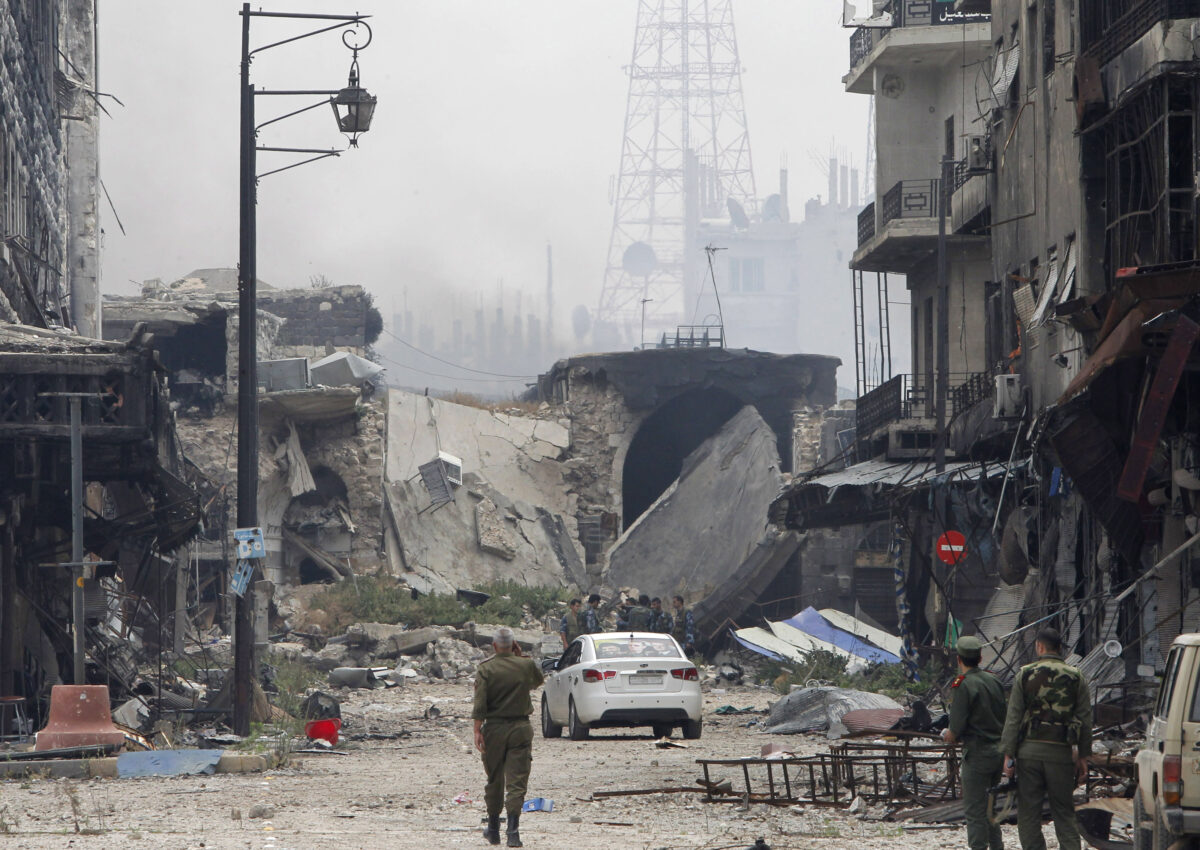Separating Fact from Fiction on Social Media in Times of Conflict
In a time of crisis, social media is flooded with images, videos and bold claims. This can be useful for researchers like ourselves but overwhelming for the general public seeking the facts.
At Bellingcat, we pride ourselves on providing tools and resources for our audience to think critically about sources they find online. In this short guide, we give a few tips on what to consider when confronted with an abundance of footage and claims.
Here’s how to separate fact from fiction with real, recent examples of misinformation.
1. Be Cautious
Treat all footage and claims with caution. Sometimes real footage can be attributed to false claims and vice versa.
For example, in one of our latest investigations Bellingcat found that the airstrike captured in a viral video occurred near the intersection of Al-Rashid and Beirut Streets, at approximately 31.516746, 34.428689, behind the lattice tower visible in the clip and did not hit the mentioned church as claimed in posts.

The church also debunked the attack on Facebook.
The same area was attacked at a later date, on October 19, 2023, and two assembly halls on the church property were then damaged.
In the process of geolocating footage related to the viral video claiming to show the church site, Bellingcat found evidence that strikes did occur in densely populated areas in the vicinity of several schools. The amplification of the false church claim, as a result, may have obscured a real violation.
You can read the full debunk here.
2. Think Critically
Particularly about big, incendiary claims. When big news stories hit, we see a lot of recycled footage posted on social media. Recycled footage is footage from other conflicts or time periods that are published as if they are from the current event.
Often details in the footage like signage or other details in the surroundings can give a clue to the true time or place the video was taken.
For example: France 24 has repeatedly debunked a video often amplified by European far-right groups, allegedly showing migrants in Calais throwing stones across a motorway. The video is actually from a protest in Israel after the police shot an Ethiopian Jew which sparked Israel’s Black Lives Matter moment in July 2019. France 24 geolocated the surroundings and the markings on the road to a highway in Israel, far away from Calais, France where the video was repeatedly claimed to have been taken.
3. Check the Source
Responsible researchers will always name the source of footage they share or analyse. Too often footage goes viral without a source—let alone an original one—listed. Be cautious if the source of the video or claim is unclear.
Simply checking the source listed can often quickly debunk any suspicious claims. TikTok videos re-shared on other platforms, for instance, usually have the original poster’s username watermarked onto the footage.

For example, in 2022 a video of an alleged news report went viral. In the video, a reporter stands in front of a line of ‘body bags’ discussing the Russian ‘military operation’ in an American accent and the caption reads “Ukranian Health Ministry: 57 dead, 169 hurt across Ukraine as Russia launches attack.” During the report, the person in the body bag behind the reporter starts to move. The video was shared with an array of claims, ranging from the dead coming back to life to assertions that the Ukrainian authorities were staging deaths to grow support for their cause.
Elementary fact-checks will show any savvy individual that this footage did not show what was claimed. A quick search on Google of the reporter’s name shows that they have never reported on such an incident. A reverse image search using a screenshot from the video reveals that the news report was taken and manipulated from coverage of a climate protest in Austria in February 2022. Fake audio had been added to the video and was easily disguised by the fact the reporter’s mouth could not be seen as he/she was wearing a mask. The Associated Press originally debunked this claim and their factcheck can now be found linked to the original misleading post on Facebook.
4. Remember that the Same Location Doesn’t Mean the Same Incident
Even if the footage is from the area, it doesn’t mean it is from the same event.
One simple way to check is to use Google reverse image search on video screenshots to see if they’ve been posted before.
For example, Bellingcat contributor Chris Osieck found that this video allegedly showing rocket fire in Palestine in October was indeed filmed in the Gaza Strip, but that it was from May 13, 2023.

He found an earlier instance of the footage labelled as showing the destruction of the Za’anin family’s home in the same region. This attack was part of fighting that occurred in May 2023.

5. Be Savvy to Manipulation and AI Generation
When all footage or photographs connected to an event go viral, you often see accounts pop up distributing manipulated or altogether fake imagery. Free and easy to access AI-powered image generation tools have now made this type of content faster to create and more common.
Although not always accurate, tools like aiornot.com can help disprove claims quickly.
For example, a video went viral in March 2022 allegedly showing Ukraine President Volodymyr Zelenskyy telling Ukrainian soldiers to “lay down their arms” and claiming that he had decided to “return Donbas” to Russian control. Many media outlets and Zelenskyy himself debunked the video. Whilst watching the video, one can see his head appears disproportionately sized in contrast to his body. His voice is also slower and deeper than in usual addresses.
6. Be Cautious of State Actors, Which Sometimes Share Staged or Unreliable Footage
In times of conflict, it is not unknown for state actors to imply bad faith on the part of their adversaries. In some cases, staged videos appear online.
For example, in March 2023, a dashcam video circulated allegedly showing a Ukrainian soldier abusing a Russian-speaking Ukrainian citizen. Pro-Russian figures and Russia’s Foreign Ministry shared the video on social media. Bellingcat and other eagle-eyed viewers, however, geolocated the footage to deep inside Russian-controlled territory. You can read the full story here.

7. Know That, Sometimes, News Organisations Get it Wrong
When you discover new claims about footage, always check for a secondary media source, ideally one that has obtained the information independently of the first source. News organisations and leading figures can sometimes use quotes from each other as sources of information (see an example that we found here) and sometimes verification steps slip through the cracks.
For example, in a famous example in 2019, ABC News broadcasted a fake video on both its ‘World News Tonight’ and ‘Good Morning America’ programmes. The video was reportedly sent to them by a trusted fixer and claimed to show the Turkish military bombing Kurdish civilians in a Syrian border town. Viewers spotted that it looked incredibly similar to a video on YouTube from a Kentucky gun range called Knob Creek. The footage had been altered slightly, but the two video timelines matched. ABC issued a statement and took down the video from their broadcasting.
8. Protect Your Mental Health
Watching footage from war zones can cause trauma.
Be careful viewing unknown footage. There is almost always an abundance of highly disturbing content circulating during times of conflict.
Always ask yourself if there is a genuine reason you need to view this footage. Organisations like Bellingcat have teams of researchers trained to view such footage with therapeutic support in place to assist them. If you do find something that needs attention, you can share it with a trusted news source rather than viewing it and amplifying it yourself.
If you are an open-source researcher, you can find Bellingcat’s guide explaining ways to better protect your mental health whilst undertaking this role here. The Dart Center also has robust advice on the risk of vicarious trauma.
Bellingcat is a non-profit and the ability to carry out our work is dependent on the kind support of individual donors. If you would like to support our work, you can do so here. You can also subscribe to our Patreon channel here. Subscribe to our Newsletter and follow us on Instagram here, X here and Mastodon here.


